Excess NSW floods donations inundate volunteers and delay cleanup
As the emotional and financial toll of the floods continues for Central West communities, locals are now asking for a pause on donations as they struggle to manage the cleanup effort.
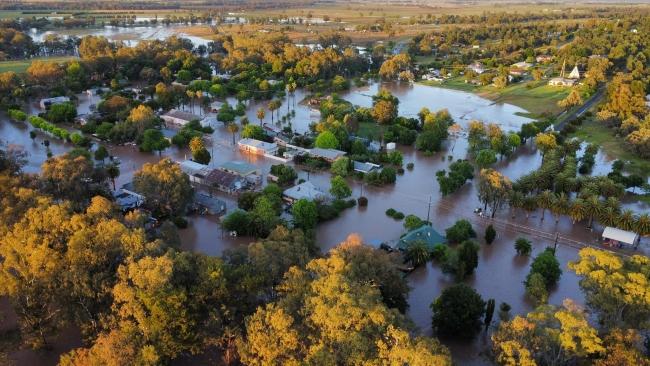
NSW
Don't miss out on the headlines from NSW. Followed categories will be added to My News.
Truckloads of donations are hampering recovery efforts in flood-ravaged Eugowra, leading to a call for well-wishers to “think before they give”.
Resilience NSW recovery co-ordinator for the far west and Orana Ken Harrison said the “overwhelming” amount of donations had diverted volunteers from cleaning up to sorting, storing and disposing of items.
With half of the central west town’s 400 homes inundated with water, and few large storage sheds left undamaged, there was also scant space to store the goods.
“We appreciate the support and concern by communities across the country,” Mr Harrison said.
“But at this point we have enough for our immediate needs.”
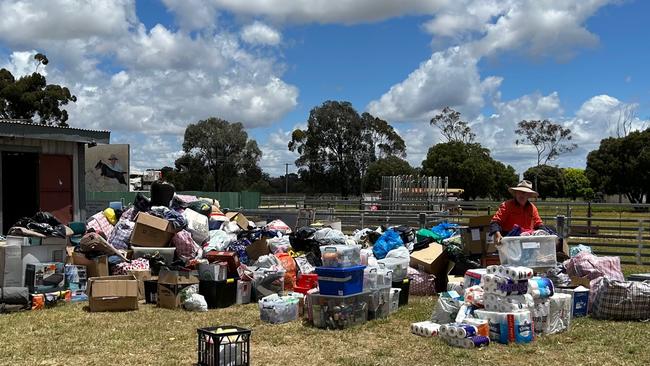
“Our one major storage space, the pavilion at the showground, is stacked full of donated goods, and we’re having to get in some shipping containers.
“But there’s still perishable and other goods out in the open, and there are issues with keeping it dry and secure.”
Mr Harrison said many furniture items would not be needed for months, with residents facing a massive clean-up and rebuild.
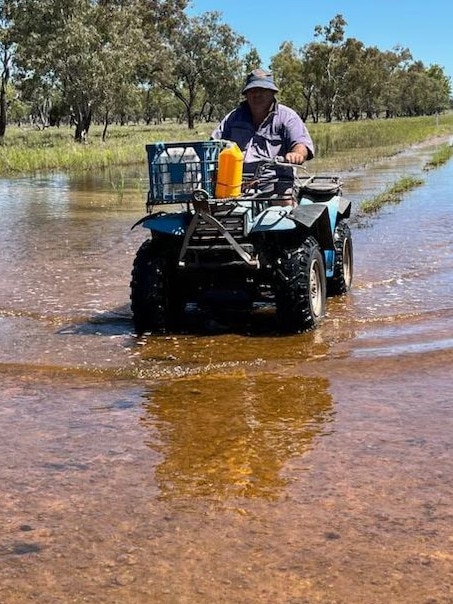
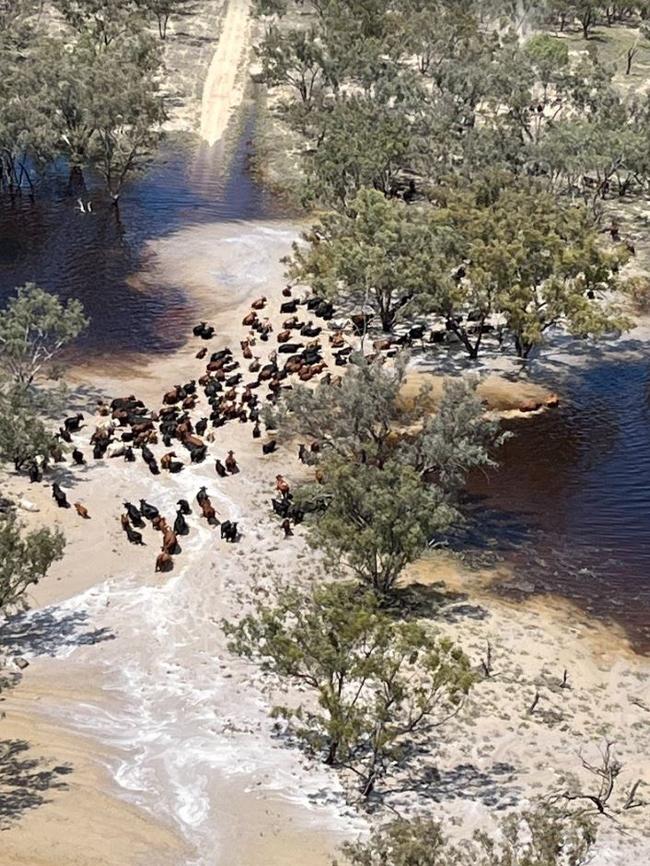
Some items, such as second-hand mattresses, clothes and toys, were not always suitable for donation.
“We’d urge people to donate through other avenues, such as the state government-endorsed GIVIT, which works with local community organisations to ensure the right donations get to those who need them, when they need them,” Mr Harrison said.
“There are other established donations channels like the Australian Red Cross and The Salvos, which allow items to be dispatched directly to residents.
“Cash donations and vouchers also allow locals to purchase items through local businesses which aid in their recovery,” he said.
FLOODS AFTERMATH BRINGING FARMERS TO THEIR KNEES
Farmers across NSW have watched their year’s work on crops and livestock washed away in the blink of an eye, with many growers not expected to harvest at all this year.
Near Mudgee, farmers like Jono Clarke, who raises Angus cattle and grows wheat, have barely taken off their gumboots all year, with multiple floods and almost constant rainfall destroying their crops.
“There’s a financial toll and there’s a mental toll because it’s frustrating to conjure up the will to clean up and put new fences up, only to be washed away a second time,” he said.
“I put in quite a bit of wheat this year and I’ve just had to write it all off, it’s just too wet to harvest it … the input this year has been enormous, (cost of) diesel is outrageous and fertiliser has doubled.
“It’s cost us tens of thousands, and to not get that back, there’s a bit of a mental toll there.”

Gerard Glover’s property in Brewarrina, in the state’s north, where he grows wheat and raises sheep, has become an island, with the farmer expecting to be isolated until Christmas.
The water, which brings with it disease and insects, has caused problems for his livestock.
“Flies have been a huge problem, we’ve had to jet all our sheep to prevent blowflies.
“We’ve had worms, then we had some four-month-old lambs dying of pulpy kidney,” he said.
“I don’t expect to be able to drive from my home into town for probably another month at least.”
Mr Glover’s wheat crop is standing in water unable to be harvested, and the farmer won’t know how much can be saved until he can get machinery onto the flooded paddock.
Even if some of the wheat can be salvaged, it will certainly be downgraded meaning any harvest will fetch a smaller rate.
All he can do is wait and hope he can recoup at least a fraction of his losses.
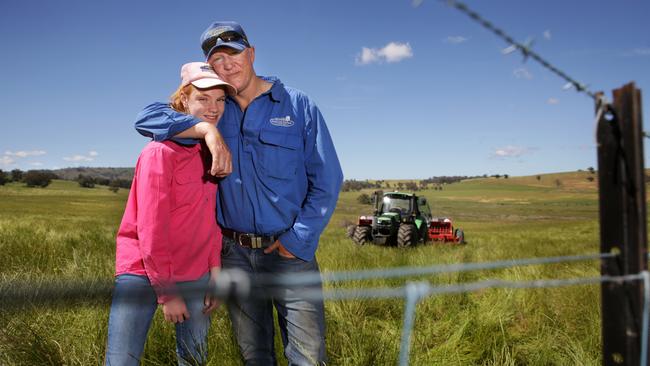
Phil English’s mixed crop and cattle business will be lucky to make its costs back this year after floods drenched the Mudgee farm.
“Normally we would plant wheat and we didn’t even put it in this year, and we’ve only got about 30 per cent of our canola,” he said.
“We lost a fair bit of cattle swept away in the flood waters, and then we lost a few kilometres of fencing … it starts to add up.”
It’s not just the loss of crops and livestock hurting the Englishes farm, with Mr English saying: “Normally we would be selling quite a lot of cattle right now, but we can’t get trucks into the farm because the roads are torn to shreds.”
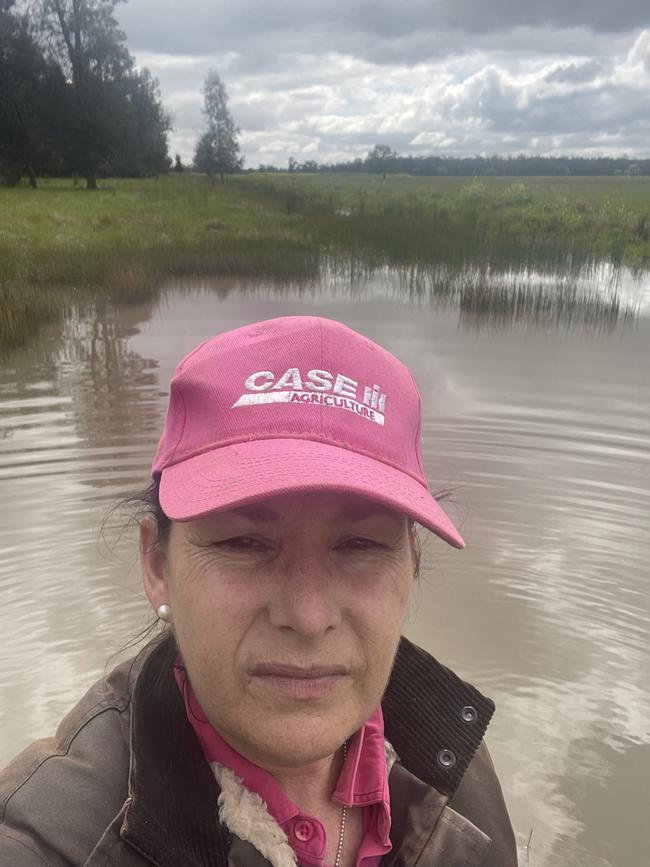
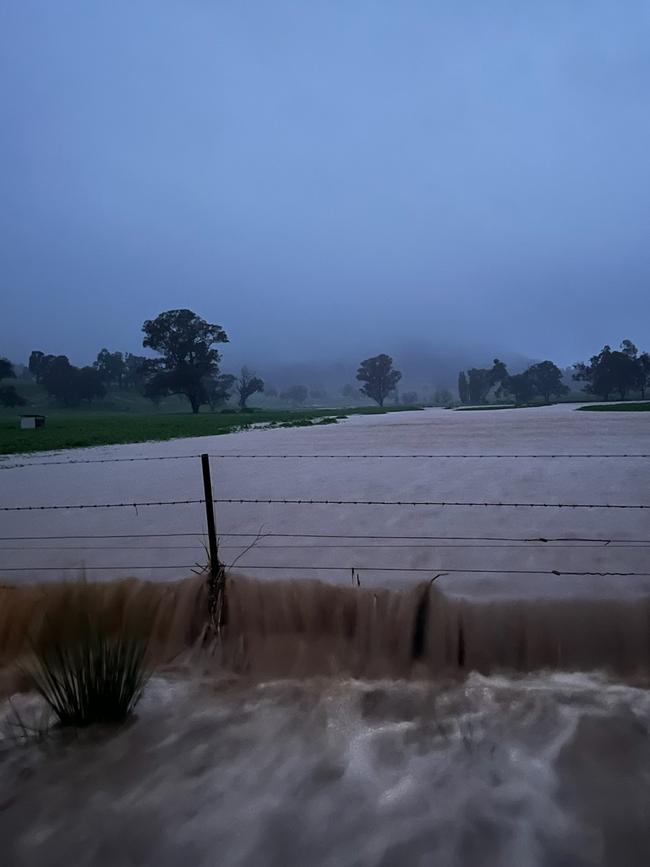
In the state’s west, Barmedman farmer Lisa Minogue was only able to plant 30 per cent of her usual cropping, and much of that has been lost to floods.
“It’s only the depth (of water) that varies, that’s how I sum up 2022,” she said.
“The water has damaged the environment, farmers have lost huge stretches of land gouged out by the water, fencing, trees and top soil loss that will take years to fix.”
Got a news tip? Email weekendtele@news.com.au
Read related topics:NSW floods


